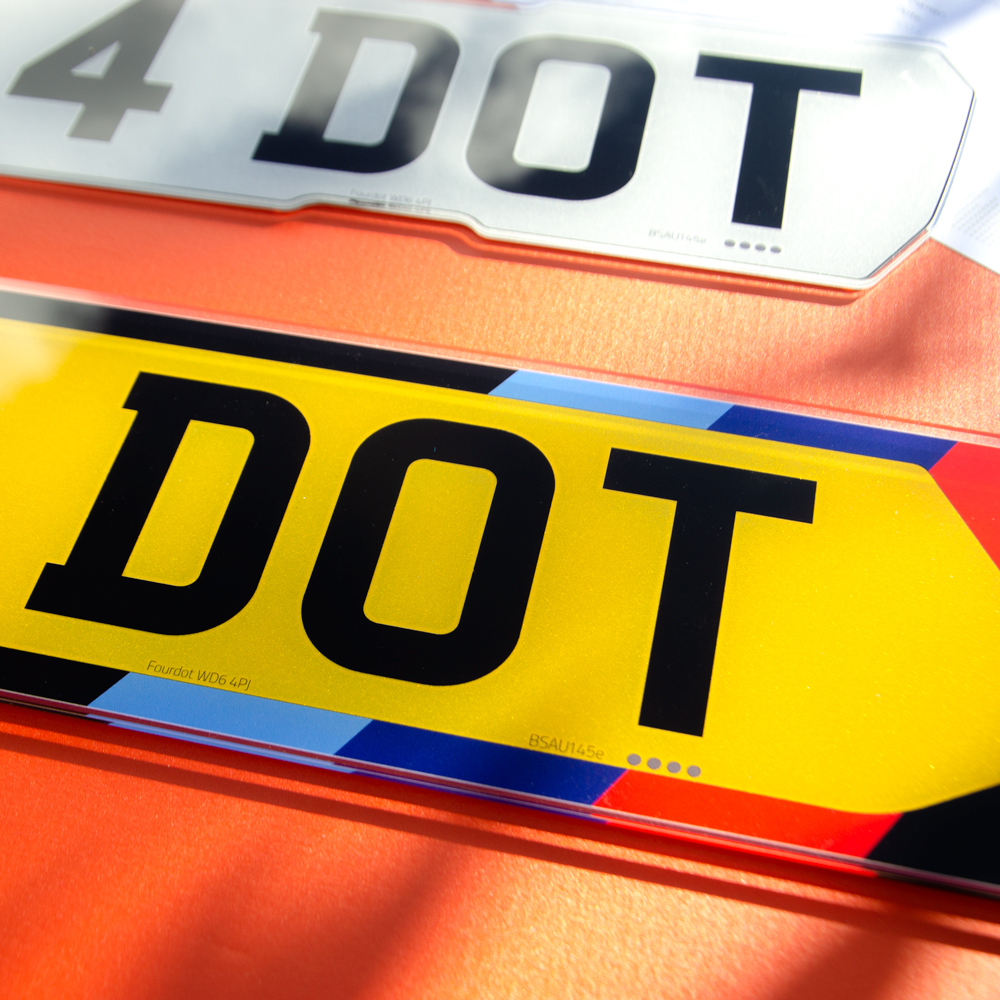It’s a simple yet strangely complicated question. This blog will help you qualify what a UK legal number plate is and the rules and laws that regulate them.
Research accumulated by Halfords has shown that 98% of all UK drivers can’t identify what does and doesn’t qualify as a legal UK number plate. Furthermore, young drivers aged 16-24 are six times more likely than drivers aged over 45 to have previously (knowingly or unknowingly) bought illegal number plates from an unlicensed number plates supplier. The number of illegal number plates rose by 18% between 2016, and 2017, according to data provided by UK police forces. They detected 7,876 non-roadworthy plates in 2016, which increased by over 1,000 to 9,031 last year. Several areas in the UK showed particularly dramatic rises. Warwickshire, Dorset, Gwent and Northumbria were all the highest, increasing by 179%, 161%, 96%, and 94%, respectively. In 2020, research provided by Compare The Market show that more than 13,000 drivers were caught driving with altered number plates last year, more than any other unlawful upgrade.
Who and what controls whether a number plate is legal?
The big one is the British Standard. Currently we are on BSAU 145e, having moved from BSAU 145d in September 2021. The British Standard lays out the core construction of a legal UK number plate. This refers to the size and font of characters, the quality and amount of retro reflective you must use. Furthermore, it also includes the colour of the yellow (rear plates) and other elements such as the statutory information or GB signs. The British standard for number plates also lays out the various tests you need to perform to make sure the component parts are to a satisfactory quality level to be a legal number plate.
The second area of number plate control comes from the government as an Act of Parliament under The Road Vehicles (Display of Registration Marks) Regulations 2001. This is where things get a little bit complicated! Over the last 50 years, various acts of parliaments and statutory instruments have been approved into law which effect the display and manufacturing of number plates. For example, the above Act of parliament has had 5 different statutory instruments applied to it making various changes. One of the most recent changes was that there needs to be 7mm gap between the characters of a registration and the statutory information on a number plate (postcode, BSAU145e etc). Prior to the changes, you could put this information anywhere as long as it did not touch a character. Therefore, you, or more importantly, your number plate supplier, should be on top of these changes in the law as they happen.
These statutory instruments tend to be introduced because of the changing state of technology in regard to policing and monitoring of road vehicles. The latest Statutory Instrument, which focuses on the creating a clean area around the registration, was a response the increasing use of ANPR (Automatic Number Plate Recognition) cameras. These cameras are now everywhere. They are used on all new SMART motorways, by police vehicles, modern car parks and the London Congestion zone.
How do I know if my number plate is Legal?
The simple way of checking your number plate is legal is to look for the 3 parts of the statutory information which should be on every number plate. These are the postcode of the issuing company, the BSAU 145e writing and the component makers mark. This could be a name or a logo.
This shows us three important pieces of information that maybe the police or an MOT inspector may need. Where you had the number plates made, this could be a dealership, a garage, or a company just like Fourdot. The BSAU 145 E written on the plate informs you that it meets the current British Standard. Finally, the makers mark shows where the component parts were made or supplied from. For example, if you have a set of plates from a car dealership, they may have issued you the number plate, but the parts would have been supplied from a manufacturer elsewhere.
Basic tips to making sure you are buying a legal number plate:
- Ensure your plates are purchased from a reputable company. Make sure you are able to call or easily contact them and that they are displaying, or have, a DVLA Number. This is to prove they are a registered and approved supplier.
- Don’t change the spacing of your registration characters from what you see on your V5 or V750 document. This is the correct layout of your registration and any change from this will result in an illegal number plate.
- Avoid ‘show plates’. If you’re looking for a legal number plate avoid any products listed as show plates. This usually means they have been produced for use at car shows and not for legal road use.
- Front plates must be white and rear number plates yellow, that’s an easy one!
- Characters must be solid black; the days of carbon, highline and 3D effects are now gone. The 2021 changes to the law have now made them illegal.
If you are at all worried about your number plates and would like some advice. Feel free to contact the team at Fourdot on 020 8387 1515 or send us an email to info@fourdot.co.uk.


